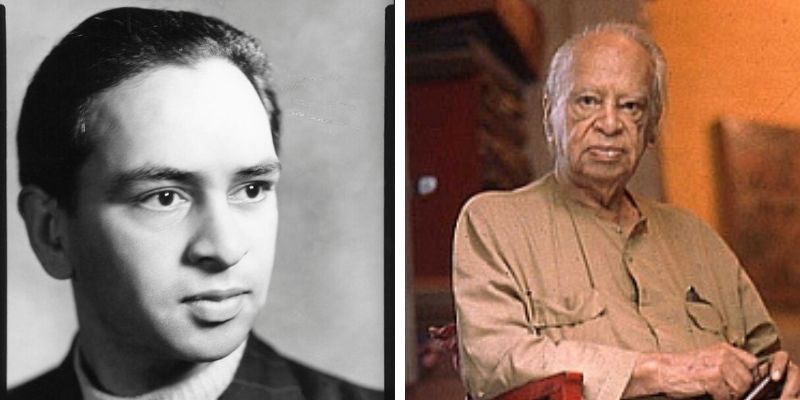Mulk Raj Anand Biography and Works
What is the most important theme of Mulk Raj Anand’s works?,How many awards did Mulk Raj Anand won?,Which of the following books was written by Mulk Raj Anand?,Who are the two lady Rams by Mulk Raj Anand?,What are the achievements of Mulk Raj Anand?,What was the first work of Mulk Raj Anand?,
Mulk Raj Anand, born on December 12, 1905, in Peshawar, British India (present-day Pakistan), stands as a towering figure in Indian English literature, celebrated for his profound commitment to social justice and an extensive body of work that grapples with the socio-economic challenges of his time. This thorough biography delves into Mulk Raj Anand’s early life, academic pursuits, literary journey, major works, and enduring legacy.Mulk Raj Anand Biography and Works
Early Life:
Growing up in a Punjabi family, Mulk Raj Anand’s childhood was profoundly shaped by the socio-economic disparities and the colonial rule of British India. Hailing from a middle-class background, Anand was acutely aware of the struggles faced by the underprivileged, a consciousness that became a central theme in his later literary works.Mulk Raj Anand Biography and Works
Anand’s early education took place in Amritsar, where he attended the Dharamsala School and later enrolled in the Government College. It was during this time that he began developing a keen interest in social issues and was exposed to Western literature, laying the foundation for his future literary endeavors.

Educational Journey:
Seeking higher education, Mulk Raj Anand traveled to England in the 1920s. At the University of London, he earned a Ph.D. in Philosophy. His stay in London exposed him to influential intellectual and cultural movements, broadening his worldview and significantly influencing his literary sensibilities.
Also Read-
- Robert Louis Stevenson Biography and Work
- Dylan Thomas Biography and Work
- John Crowe Ransom Biography and Work
While in England, Anand immersed himself in both literary and political circles, engaging with prominent thinkers and embracing socialist ideas that would profoundly shape his perspective on social justice and inequality.
Early Literary Career:
The inception of Mulk Raj Anand’s literary career can be traced back to the publication of his debut novel, Untouchable, in 1935. This groundbreaking work, offering a stark critique of the caste system, particularly the plight of the Dalits, marked the beginning of Anand’s reputation as a socially conscious writer.
Major Works:
Untouchable (1935): A seminal work that portrays a single day in the life of Bakha, a young untouchable, exposing the dehumanizing effects of caste discrimination.Mulk Raj Anand Biography and Works
Coolie (1936): Delving into the life of Munoo, a boy who becomes a coolie, this novel explores the harsh realities of colonial exploitation and economic disparity.Mulk Raj Anand Biography and Works
Two Leaves and a Bud (1937): Addressing the exploitation of tea plantation workers, Anand intertwines economic exploitation with broader issues of social injustice.
The Village (1939): Set in a fictional Indian village, this novel vividly portrays rural life and examines the impact of social and economic forces on traditional communities.
Across the Black Waters (1940): Against the backdrop of World War I, this novel follows the experiences of Lalu, a sepoy in the British Indian Army, exploring identity, nationalism, and colonialism.
The Sword and the Sickle (1942): Set during the Russian Revolution, Anand weaves historical events with the personal struggles of Indian revolutionaries in Europe.
The Big Heart (1945): Exploring the impact of World War II on Indian society, this novel focuses on the experiences of Indian soldiers and their families.
Private Life of an Indian Prince (1953): Examining the conflict between tradition and modernity, this novel follows a young prince navigating the changing social landscape of post-colonial India.
Beyond novels, Anand’s repertoire includes short stories and essays, with collections like The Barber’s Trade Union (1944) and Lajwanti and Other Stories (1952) showcasing his ability to capture the nuances of Indian society.
Literary Style:
Post-Independence Period: Following India’s independence in 1947, Mulk Raj Anand continued to contribute to social and political discourse through his writing. He remained an active participant in literary and intellectual circles, offering insights on nationalism, secularism, and the challenges faced by the newly independent nation.
Later Years and Legacy: In his later years, Anand maintained an active role in cultural and educational initiatives, serving as the Founder-Director of the Academy of Fine Arts and Literature in New Delhi. His enduring legacy extends beyond his lifetime, with his impact on Indian literature and society immeasurable.
Mulk Raj Anand’s writings are studied in academic curricula, and his influence is evident in the works of subsequent generations of writers addressing themes of inequality and discrimination. As a literary icon, his commitment to social justice and his use of literature to advocate for change continue to inspire writers, scholars, and activists. His exploration of the human condition and dedication to social justice ensure that his legacy endures, with his works remaining relevant and influential in the ongoing discourse on socio-economic disparities and human rights in India.
Writing Style:
- Social Realism: Anand’s works are steeped in social realism, portraying the stark realities of Indian society. His narratives provide a window into the lives of the marginalized and oppressed, addressing social issues with a keen eye for detail and authenticity.
- Empathy for the Marginalized: Anand’s deep empathy for the marginalized is a defining aspect of his writing. Whether exploring the lives of untouchables, laborers, or soldiers, he brings a humane perspective to characters often overlooked in mainstream literature.
- Straightforward Prose: Anand’s prose is characterized by its simplicity and clarity. His straightforward writing style makes his works accessible to a broad audience while conveying powerful messages about societal issues.Mulk Raj Anand Biography and Works
- Engagement with Social Issues: Central to Anand’s writing is his commitment to engaging with pressing social issues. He uses literature as a medium to critique societal norms, address caste discrimination, colonial exploitation, and explore the impact of wars on Indian society.
- Nuanced Characters: Anand’s characters are nuanced and multi-dimensional. He creates individuals with complex emotions and personal struggles, allowing readers to empathize with their experiences and challenges.
- Blend of History and Fiction: In several works, Anand seamlessly blends historical events with fictional narratives. This combination adds depth to his storytelling, offering readers a contextual understanding of the socio-political landscape.
- Advocacy for Social Change: Through his writing, Anand actively advocates for social change and justice. His works serve as a platform for raising awareness about societal inequalities and challenging established norms.
- Cultural Sensitivity: Anand’s cultural sensitivity is evident in his portrayal of diverse communities and settings. He captures the essence of Indian culture while also critiquing aspects that contribute to societal disparities.
Conclusion
Mulk Raj Anand’s life and literary contributions stand as a testament to his unwavering commitment to social justice and his profound impact on Indian literature. Born into a society marked by socio-economic disparities and colonial rule, Anand emerged as a prolific writer who fearlessly addressed the challenges faced by the underprivileged. Through a series of major works, including Untouchable, Coolie, and The Village, he skillfully wove narratives that exposed the harsh realities of caste discrimination, colonial exploitation, and the evolving socio-political landscape of India.Mulk Raj Anand Biography and Works
Anand’s writing style, characterized by social realism, empathy for the marginalized, and a straightforward prose, not only made his works accessible to a diverse audience but also contributed to their enduring relevance. His nuanced characters, advocacy for social change, and blend of history with fiction created a literary legacy that continues to resonate with readers, scholars, and those passionate about addressing societal inequalities.What is the most important theme of Mulk Raj Anand’s works?,How many awards did Mulk Raj Anand won?,Which of the following books was written by Mulk Raj Anand?,Who are the two lady Rams by Mulk Raj Anand?,What are the achievements of Mulk Raj Anand?,What was the first work of Mulk Raj Anand?,
As a literary icon, Mulk Raj Anand’s influence extends beyond his lifetime, with his works serving as a source of inspiration for subsequent generations of writers and social activists. His dedication to using literature as a tool for social reform ensures that his legacy endures, and his impact on the discourse surrounding human rights, socio-economic disparities, and cultural complexities in India remains significant.Mulk Raj Anand Biography and Works
FAQ:
1. What are some of Mulk Raj Anand’s major works?
Some of Anand’s major works include Untouchable, Coolie, Two Leaves and a Bud, The Village, Across the Black Waters, and The Sword and the Sickle. These novels explore themes of caste discrimination, colonial exploitation, and the socio-economic challenges faced by various communities in India.
2. How would you describe Mulk Raj Anand’s writing style?
Mulk Raj Anand’s writing style is characterized by social realism, empathy for the marginalized, and straightforward prose. He engages with pressing social issues, creates nuanced characters, and uses literature as a medium to advocate for social change.
3. How did Mulk Raj Anand contribute to the discourse on social justice?
Anand actively contributed to the discourse on social justice through his writings, addressing issues of caste discrimination, colonial exploitation, and socio-economic disparities. His works served as a platform for raising awareness and advocating for positive societal change.

















